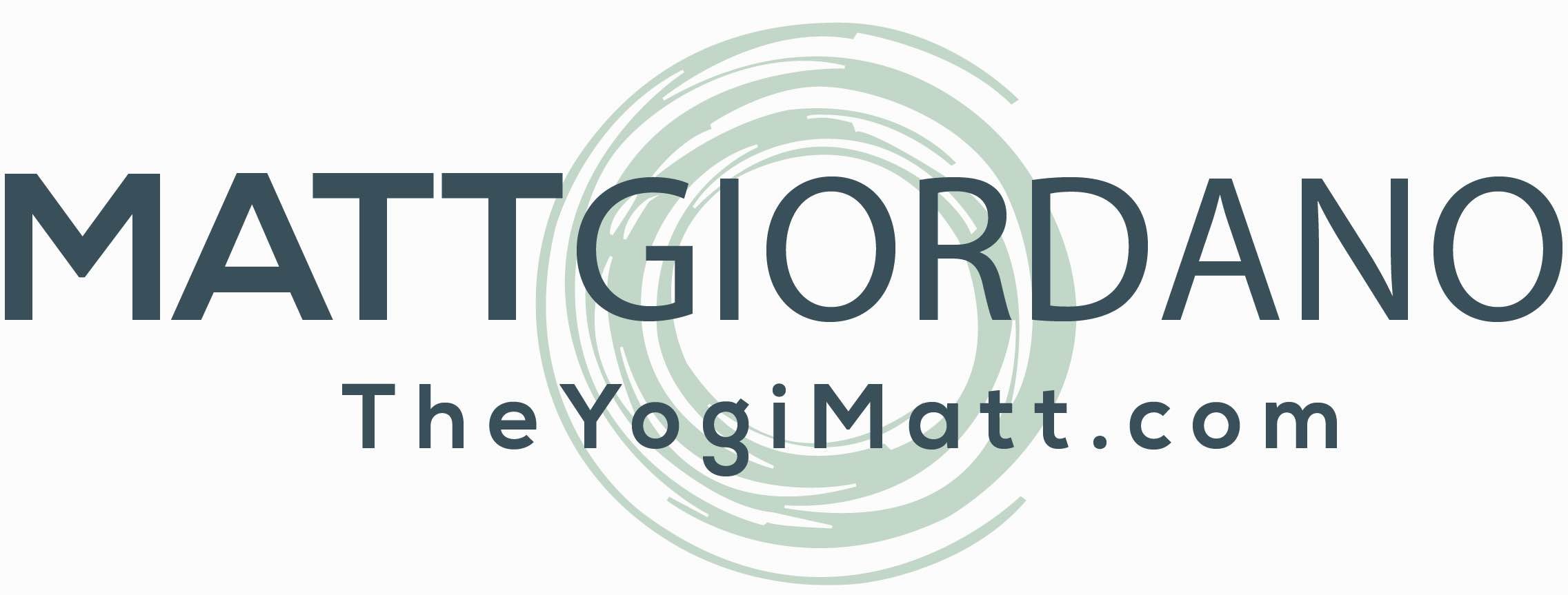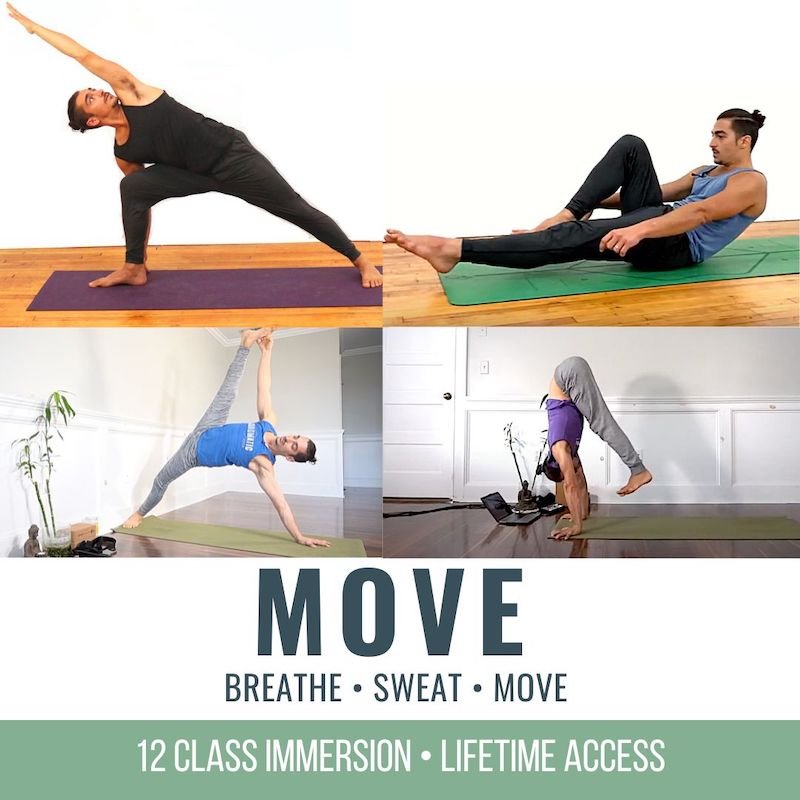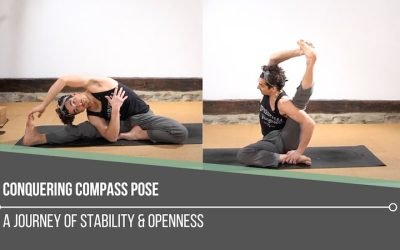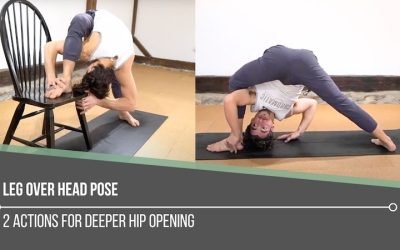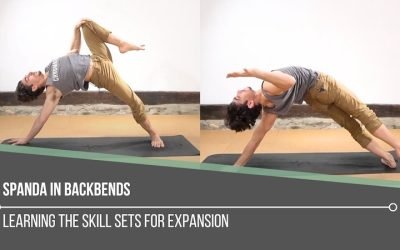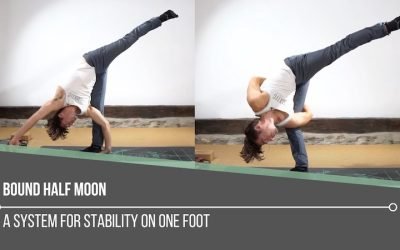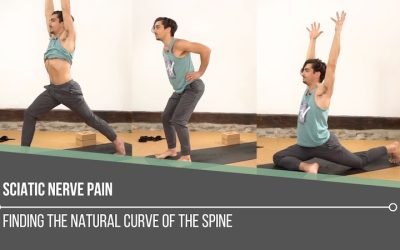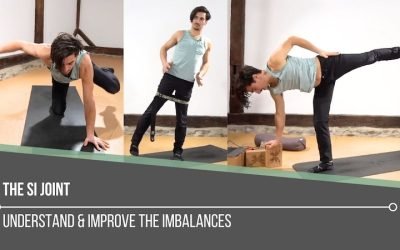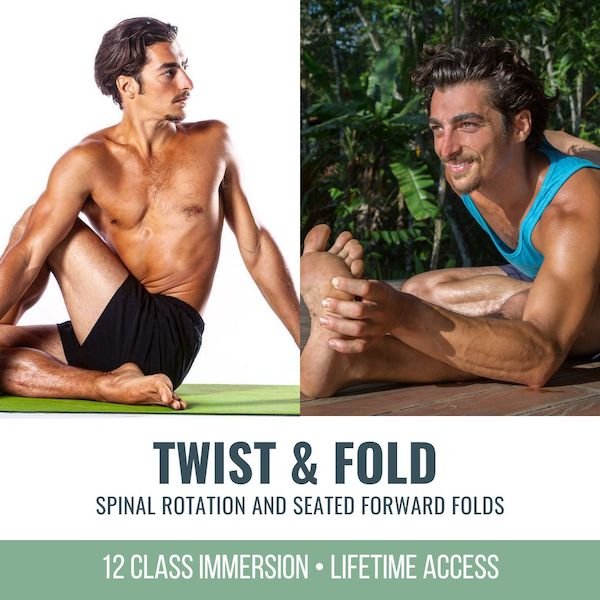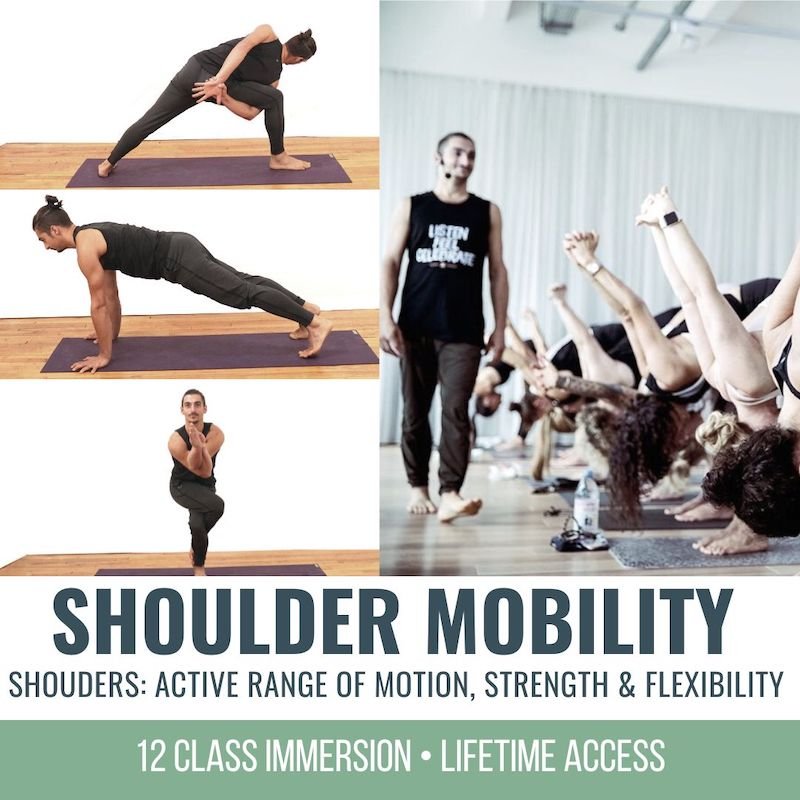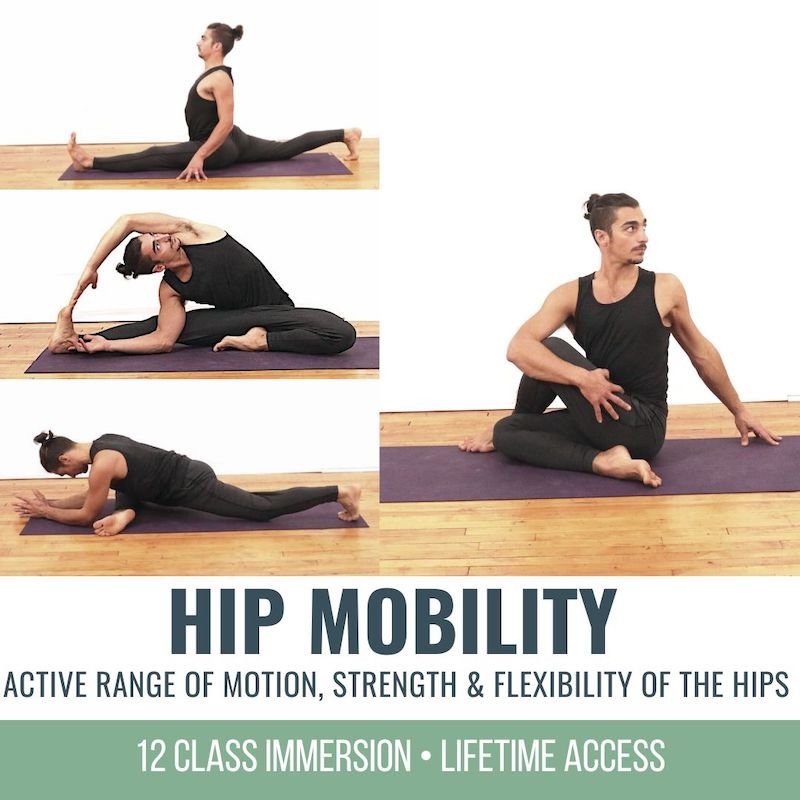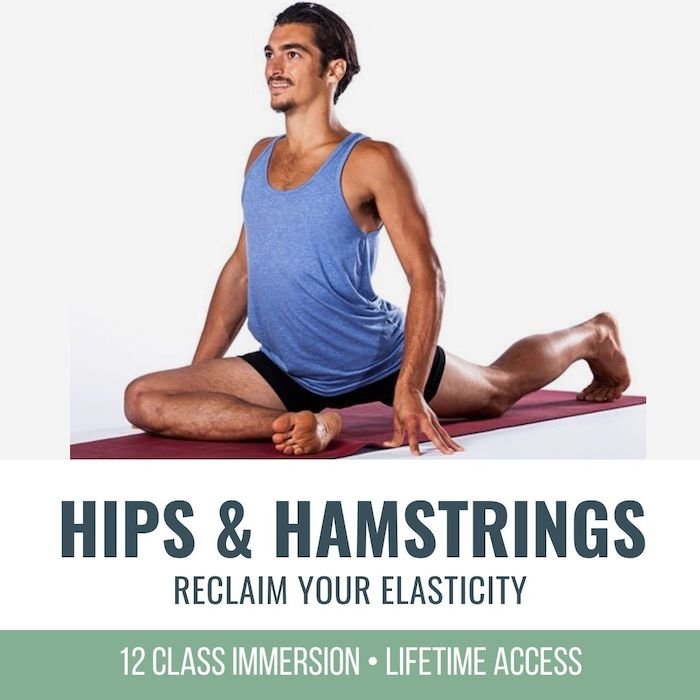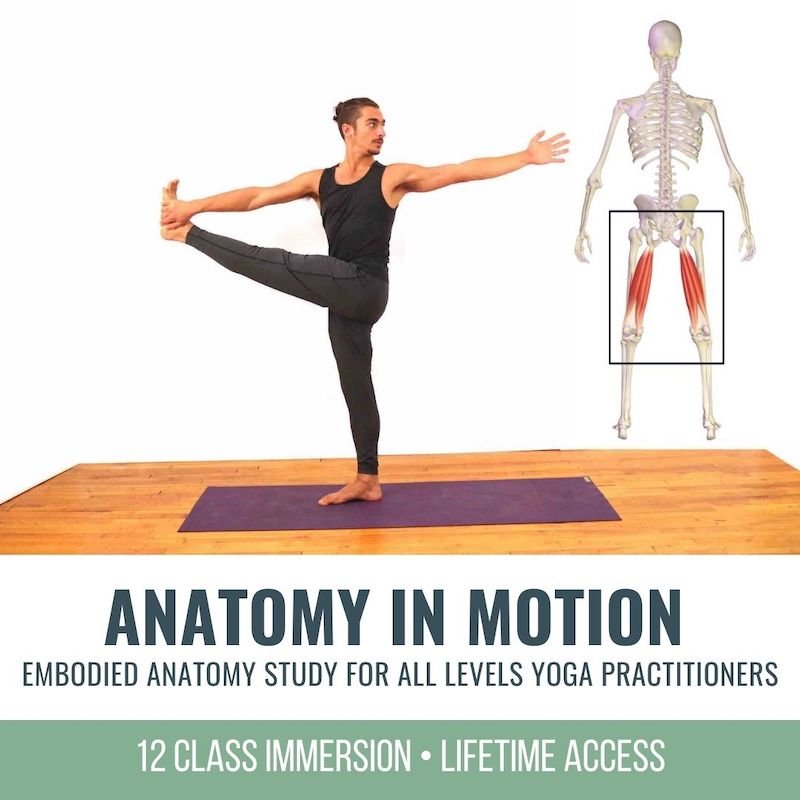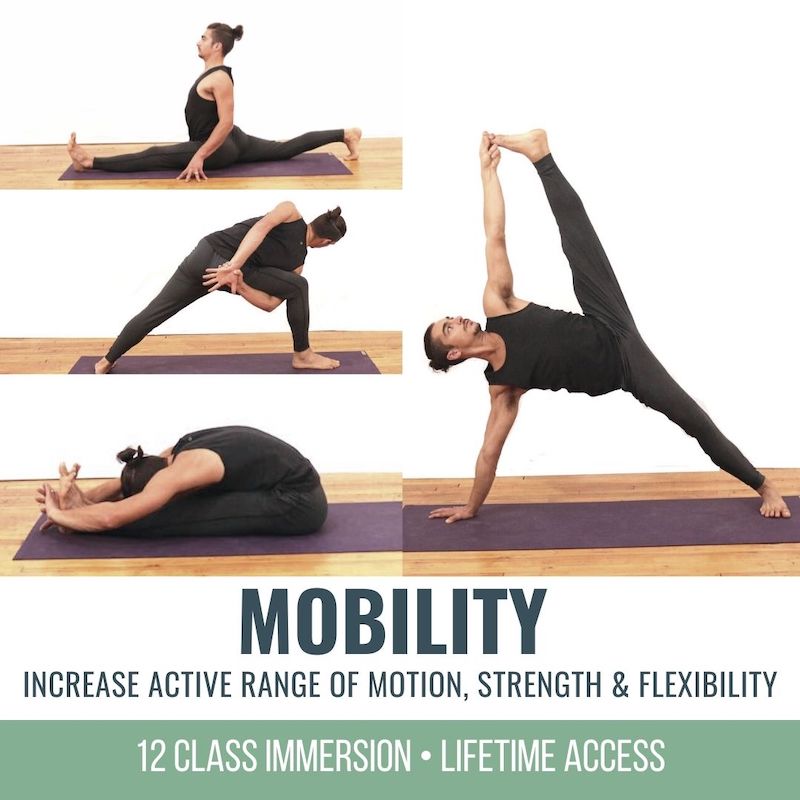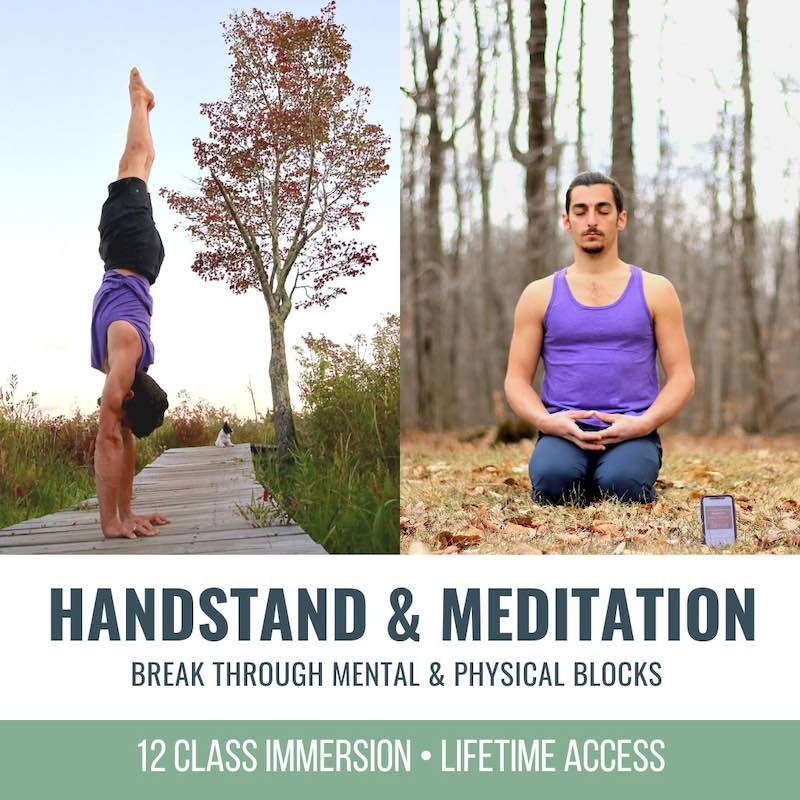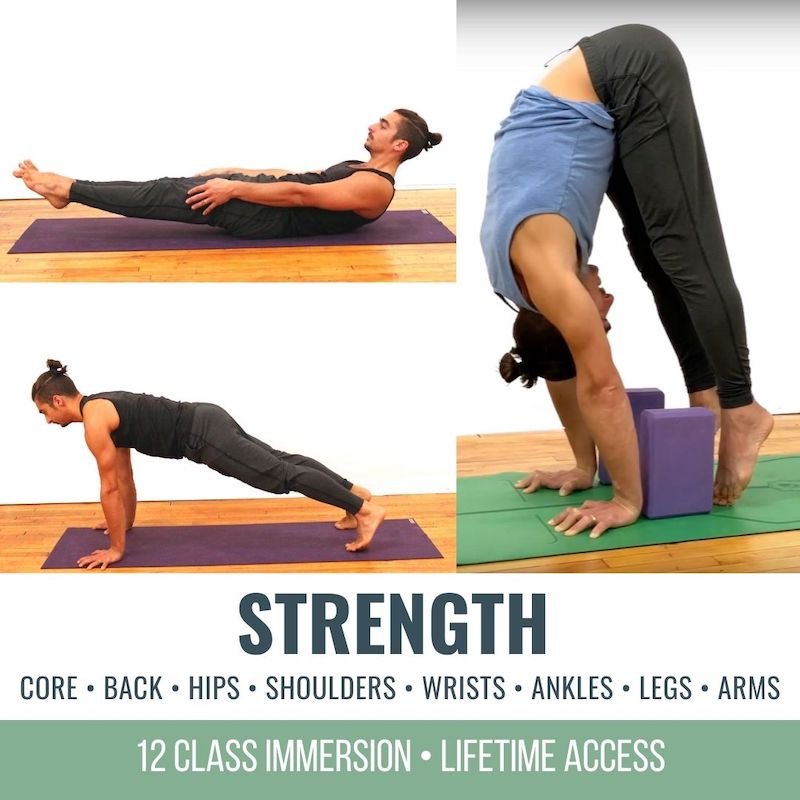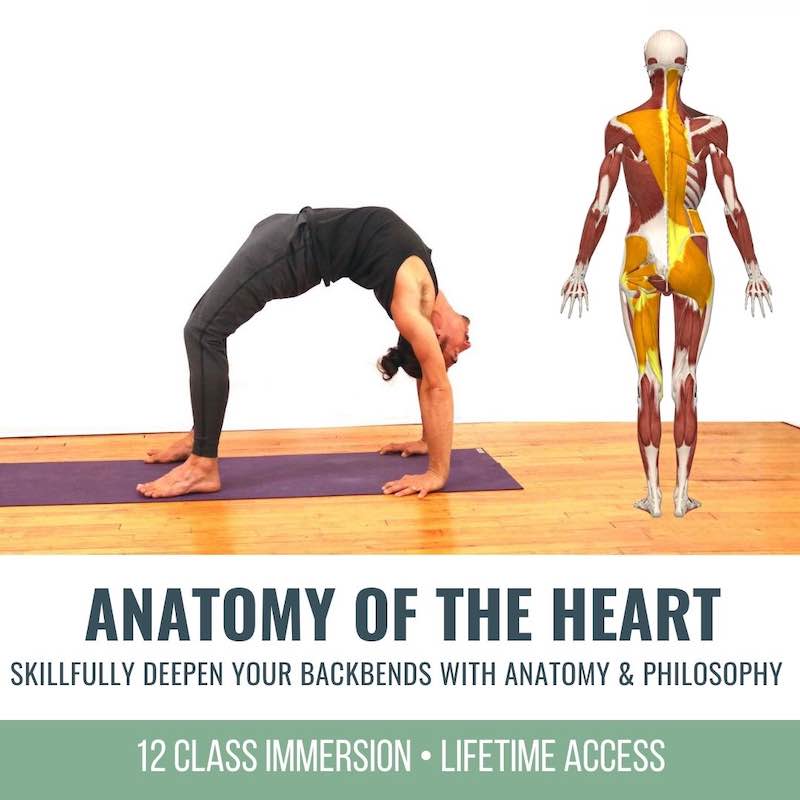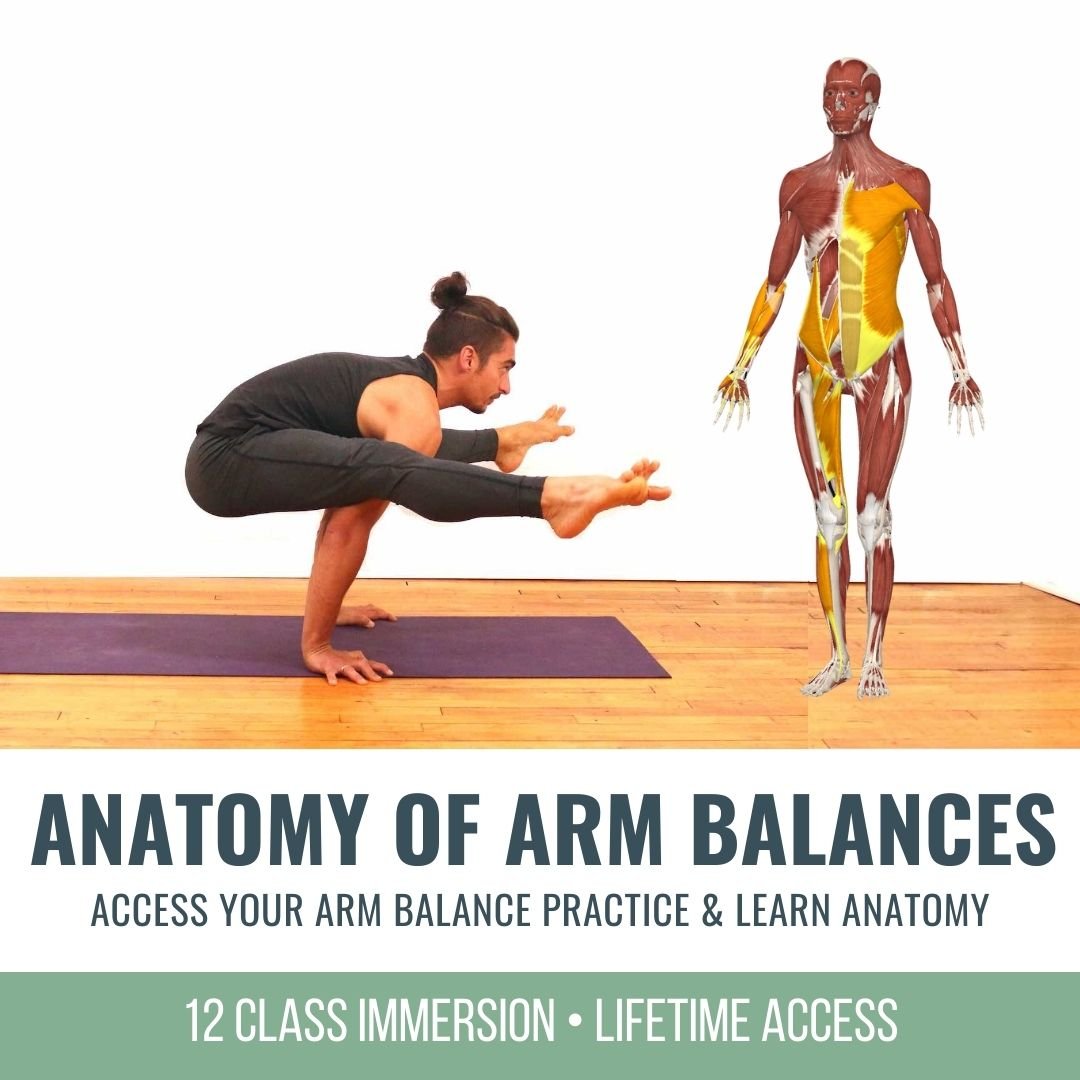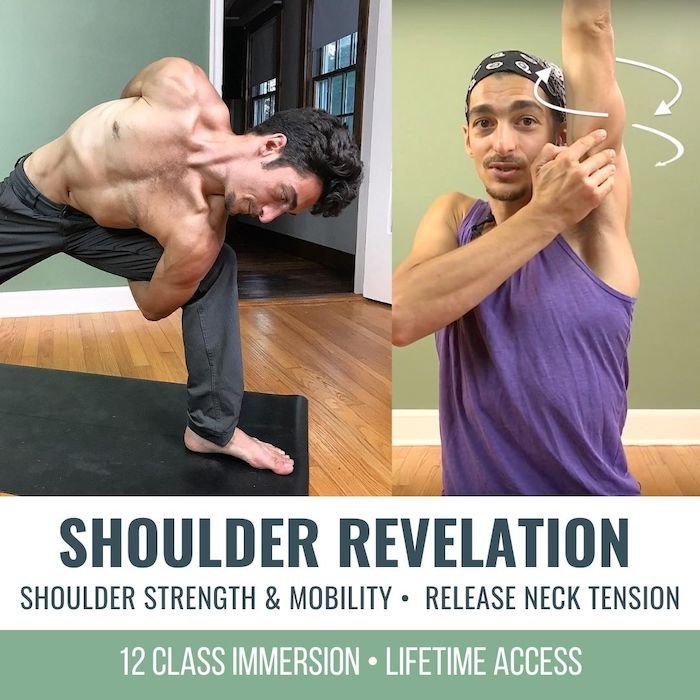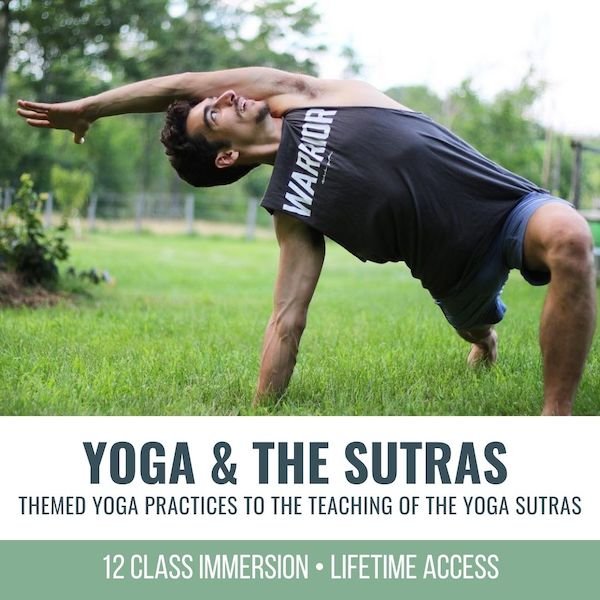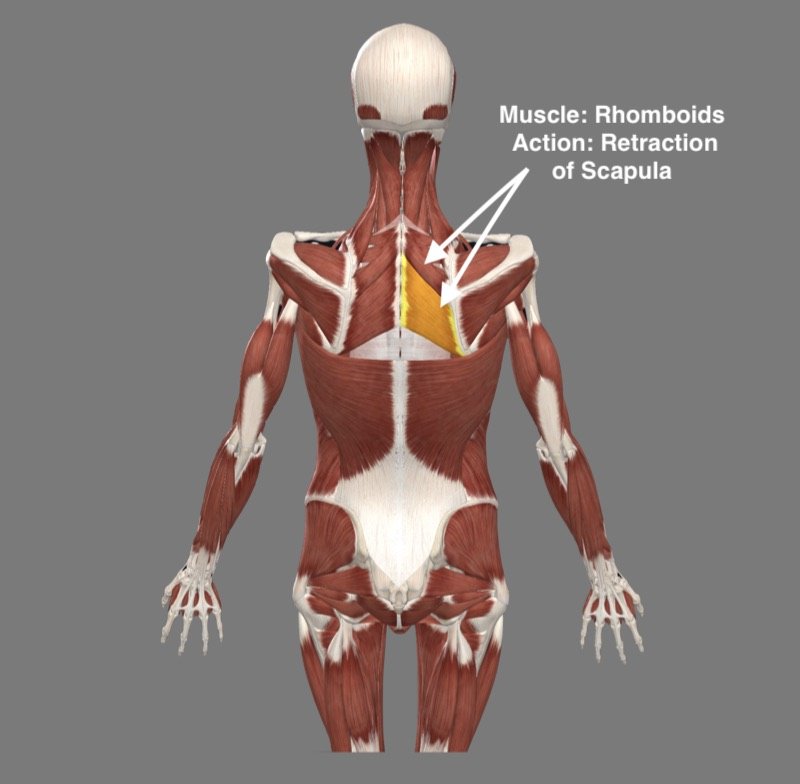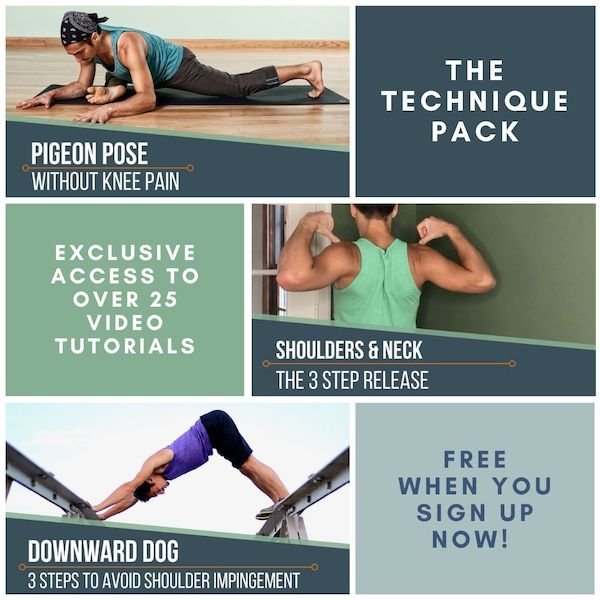Conquering Compass PoseSURYA YANTRASANACONQUERING COMPASS POSE Conquering Compass Pose isn’t about forcing your leg behind your shoulder—it’s about understanding and participating in the muscular coordination that makes the posture possible. The real power comes from...
Create Fluency In Your Flows
Create Fluency in Your Flows
Workshop These Vinyasa Transitions
FLUIDITY
IS IT “FIND” OR “CREATE” FLUENCY IN YOUR FLOWS?
It’s most definitely possible to say “find” fluency in your flows when it comes to a Vinyasa-style yoga practice, but I believe “create” is a more appropriate word to use here because it implies that you have to take action to make fluency happen. It’s vital to be very intentional about your approach when you are integrating something into your life, and it’s no different with regard to your yoga practice on the mat. Matt teaches specific techniques and strategies to make it easier for you to be intentional. Sometimes you have the yearning, but you don’t know what steps to take. In today’s video, you’ll see how Matt workshops how to utilize strength, the creative use of props, and harmony between breath and movement for a perfect equation to create fluency in your flows.
MOVE
- Access your movement potential
- Sweat and raise your heart rate
- Master your breath/movement coordination
- Increase mobility at all major joints
- Learn to gracefully transition between postures
- Improve your flexibility
- Strengthen your hips, back, shoulders, and core
- Improve your balance
- Each class will raise your heart rate, bring you to a sweat, and return you back to a relaxed state of mind and body
- 12 Classes: All levels appropriate
- Lifetime unlimited access to all
- Attend the livestream OR practice the replays any time that's convenient for you
$168.00
NAVIGATING TRANSITIONS
A Vinyasa-style practice is associated with almost seamless, flowing-type movements on your mat. The synchronicity of movement with breath elicits a certain pace and a “push” quality, since you are always looking ahead or moving towards the next posture. Doing this requires a degree of strength in order to flow with confidence.
It’s also important to understand that moving with control and elegance on your mat is so much more than the aesthetics. You can’t deny that watching someone gracefully move across their mat is beautiful, but what you’re actually witnessing is the time and effort that has gone into developing strength. Navigating your way through a sequence of postures requires not only focus in the moment but also anticipation of what is coming next.
The clips from today’s video are from Matt’s MOVE Immersion. In the clips, he teaches you, with explicit instruction, how to transition from Warrior II to Half Moon Pose and how to Jump Back into Chaturanga from Standing Splits. Woven into the instruction of both transitions is how to utilize strength and how the power of props helps to pattern the fluidity of these transitions into your nervous system.
WATCH THE VIDEO
CREATE FLUENCY IN YOUR FLOWS: WORKSHOP THESE YOGA TRANSITIONS
WARRIOR II TO HALF MOON
First, let’s look at Warrior II to Half Moon. I would say that this is a fairly common transition, but without a deeper understanding of how to utilize your strength for balance, it can easily fall apart. For you to learn how to find fluency, Matt first advises you to come to the long side of your mat. From here, you can root down into your mat with your front foot. Next, he instructs you to take your back foot off of the mat. Doing this will help with the glide that’s necessary to “push” forward into Half Moon. What’s the best way to glide? The prop that’s used here is a sock on your back foot to glide across a hardwood floor or similar surface. The way to home in on strength here is to activate your gluteus muscles. Rooting down through your front heel encourages the activation of the glutes in the front leg. This firming down supports your ability to neatly drag or glide your back foot towards the front in order to lift into Half Moon. What happens when you return to your mat? You’ll see how Matt progresses you to the point where you can eventually take the contact of the back foot away from the floor completely. The return to Warrior II is simply the reversal of all of the steps. What you’re left with is powerful yet free-flowing movement that appears weightless.
200 HOUR ONLINE TEACHER TRAINING
GET CERTIFIED & DEEPEN YOUR YOGA PRACTICE
- Deepen your yoga practice
- Build confidence speaking in front of groups in person and online
- Learn foundational class structures and templates
- Learn techniques for a wide range of yoga postures
- Get certified and highly qualified to teach yoga
- Yoga Alliance Globally Recognized Certification Program
JUMP BACK FROM STANDING SPLITS
This transition exhibits an explosive amount of power. One of the keys to unleashing the power for the lightness of the float in the jump back is to strengthen your hamstrings and glutes. You’ll see how Matt utilizes a block to maintain the activation in these muscle groups. To create the foundation, you’ll also use socks as a prop to learn to pattern a smooth sweep back into Chaturanga (the progression here happens without the block). The lift of the top leg in Standing Splits requires glute and hamstring strength. Maintaining this lift while jumping back is what contributes to the buoyancy. Of course, the upper-body strength required is not to be neglected, but breaking it down and layering each aspect will assist in finding the fluency required here. In the video, you’ll also want to pay attention to Matt’s hand placement when he’s setting up “Standing Splits preparation.” This detail is essential for preparing the upper body to harness more strength.
300 HOUR ONLINE TEACHER TRAINING
GET 500 HOUR CERTIFIED AS A MASTER TEACHER
Master your skill set as a teacher through refined techniques, anatomy, biomechanics, sequencing, philosophy, meditation techniques, theming, yoga business, and much more!
- Get 500 hour certified
- Learn anatomy, biomechanics, asana techniques
- Expand your teaching skills
- Masterful sequencing and verbal delivery
- Learn meditation and breathwork techniques
- Transformative tools: theming, dharma talks, satsang
LET IT ALL GO
Finding fluency in your flows means that you’ve found this beautiful collision, where strength meets softness. There is a level of push and action while giving over to the flow of momentum. Fluency is accessible and possible. Cultivating strength is the foundation. The use of props can assist with strength and create ease. It’s true that your breath anchors it all, and it’s also what helps you to let go and flow freely.
There’s still time to register for MOVE, where Matt shares a plethora of techniques and tools to move with grace.
See you on the mat!
The 200 Hr. Teacher Training: Click Here to See the Next Start Date
The 300 Hr. Advanced Teacher Training: Click Here to See the Next Start Date
Article by Trish Curling
Video Clips Extracted From: Move Immersion
MOVE
- Access your movement potential
- Sweat and raise your heart rate
- Master your breath/movement coordination
- Increase mobility at all major joints
- Learn to gracefully transition between postures
- Improve your flexibility
- Strengthen your hips, back, shoulders, and core
- Improve your balance
- Each class will raise your heart rate, bring you to a sweat, and return you back to a relaxed state of mind and body
- 12 Classes: All levels appropriate
- Lifetime unlimited access to all
- Attend the livestream OR practice the replays any time that's convenient for you
$168.00
Continue Learning
Conquering Compass Pose
Leg Over Head Pose
Leg Over Head PoseEKA PADA SIRSASANALEG OVER HEAD POSE Leg Over Head Pose is one of those postures that challenges not only our bodies but also our mindset. When faced with a seemingly impossible pose, we tend to respond in one of three ways: dismissing it as...
Spanda In Backbends
Spanda In BackbendsSIDE PLANKSPANDA IN BACKBENDS Spanda in backbends is the key to creating both stability and freedom in spinal extension. Backbends are not just about bending; they require a balance between expansion and controlled engagement to prevent excessive...
Bound Half Moon
Bound Half MoonBADDHA ARDHA CHANDRASANABOUND HALF MOON The elements involved in Bound Half Moon are many. There’s a lot at work and more than meets the eye. Our ears, eyes, muscles, and proprioception help us to balance. When it comes to which element carries more...
Sciatic Nerve Pain
Sciatic Nerve Painhip strengthSCIATIC NERVE PAIN The sciatic nerve runs from the lower back through the glutes and down the leg, making it one of the longest nerves in the body. Because of its length, it can easily become irritated or pinched, leading to pain anywhere...
The SI Joint
The SI JointalignmentTHE SI JOINT What is the SI Joint? To understand what it is, we must discuss all that surrounds it. First, the Sacrum is a triangular-like shaped bone that sits between the two sides of the pelvis (the left Ilium and right Ilium). Now each Ilium...
THE FREE TECHNIQUE PACK
When You Subscribe, You Will Get Instant Access to
- the Technique Pack: 15 yoga pose breakdowns
- exclusive online course discounts
- exclusive blogs and videos
